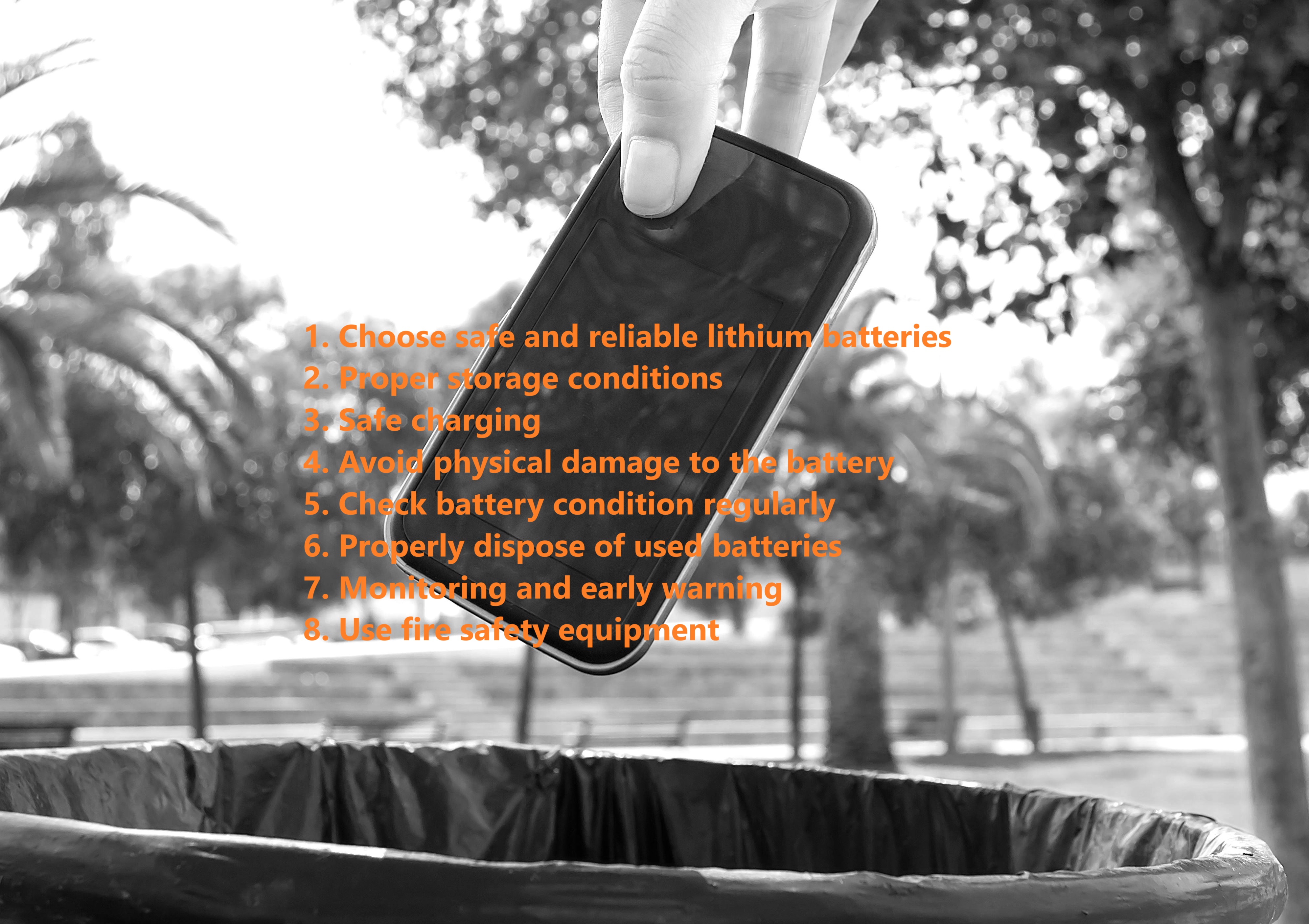
Preventing indoor lithium battery spontaneous combustion disasters requires multi-faceted measures, because the risk of spontaneous combustion of lithium batteries comes from overheating, overcharging, physical damage or internal short circuit. Here are some specific prevention methods to reduce the risk of spontaneous combustion of lithium batteries, especially in indoor environments:
1. Choose safe and reliable lithium batteries
When purchasing lithium batteries, you should choose certified and qualified products, avoid using inferior or non-compliant batteries, and ensure that the products comply with international or national safety standards, such as UL, CE or RoHS certification. In addition, when using batteries, try to choose original batteries and chargers that match the device, and avoid using non-original or poorly compatible devices. This can prevent risks such as overcharging or overheating.
2. Proper storage conditions
Lithium batteries should be stored at room temperature of 15-25°C to avoid excessively high or low temperatures, as high temperatures will accelerate chemical reactions inside the battery and increase the risk of spontaneous combustion. Batteries should be stored away from combustible materials such as paper or cloth to prevent the spread of fire caused by battery failure. In addition, the battery should be protected from direct sunlight to prevent overheating. At the same time, the battery should be placed in a place out of reach of children or pets to avoid the risk of spontaneous combustion caused by external force damage such as biting, dropping, etc.
3. Safe charging
To prevent lithium batteries from overheating or spontaneous combustion, avoid overcharging, use a charger with overcharge protection, and avoid leaving the device plugged in for an extended period. In addition, avoid charging without supervision, especially at night or when leaving the room for long periods of time. At the same time, the charging environment should be well ventilated and avoid charging in closed or high-temperature environments to reduce the risk of fire.
4. Avoid physical damage to the battery
To avoid internal short circuit caused by damage to the lithium battery casing, the battery should be handled carefully to prevent falling or strong impact. At the same time, the battery should not be placed where it may be squeezed or bent, such as tightly packed in a backpack or pocket, to avoid physical damage and safety risks.
5. Check battery condition regularly
Regularly check whether the lithium battery has any abnormality, such as expansion, deformation, leakage of liquid or abnormal smell. If any problem is found, stop using it immediately and deal with it properly. In addition, since the life of lithium batteries is limited, their performance will decline over time, so aging batteries should be replaced in time to prevent safety risks caused by performance degradation.
6. Properly dispose of used batteries
Lithium batteries may still ignite spontaneously when damaged or improperly disposed of, so do not throw them away at will. They should be stored away from flammable items in accordance with recycling regulations. Send discarded lithium batteries to professional recycling points for processing to avoid fires caused by improper disposal to ensure safety.
7. Monitoring and early warning
(1) Install fire detection equipment: Install smoke detectors or high temperature detectors indoors where lithium batteries are charged or stored so that you can receive timely alerts when battery abnormalities occur.
(2) Use smart charging management: Some smart chargers are equipped with temperature and voltage monitoring functions that can automatically stop charging or issue warnings and can respond promptly when battery abnormalities occur.
8. Use fire safety equipment
(1) Fire-proof bags and boxes: If long-term storage or charging is required, lithium batteries can be placed in special fire-proof bags or fire-resistant boxes. These devices can effectively reduce the spread of fire caused by spontaneous combustion of batteries.
(2) Have a fire extinguisher: Place a suitable fire extinguisher in the lithium battery storage or charging area. It is best to choose a dry powder fire extinguisher or a carbon dioxide fire extinguisher, because these fire extinguishers are more effective against battery fires.
Through the above measures, the risk of spontaneous combustion of lithium batteries indoors can be effectively reduced and the safety of people and property can be ensured.
If you have any inquiries about response and management measures for occupational safety and health-related hazard prevention, please feel free to contact us.
